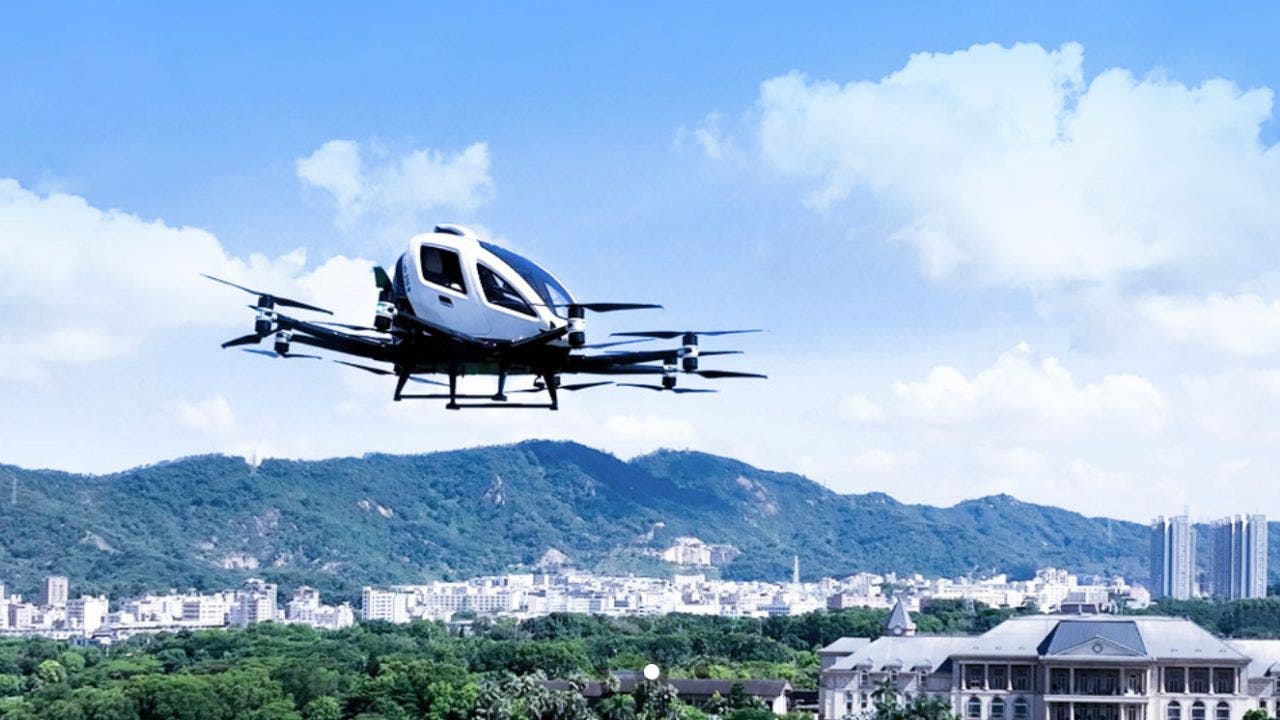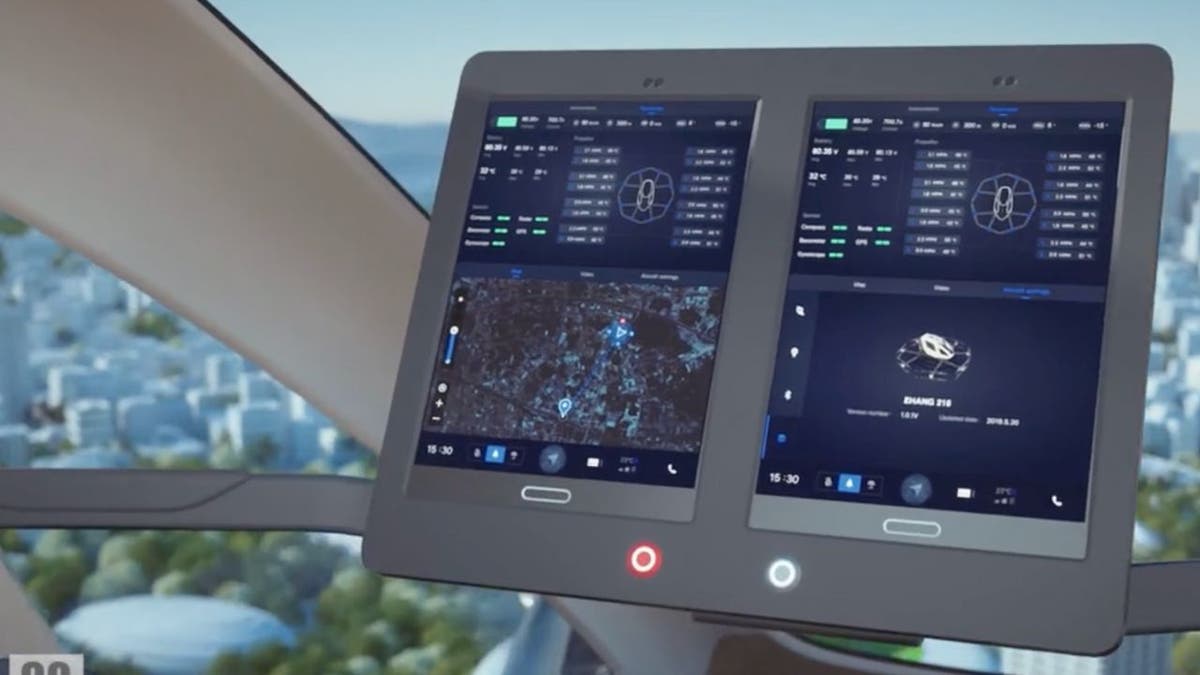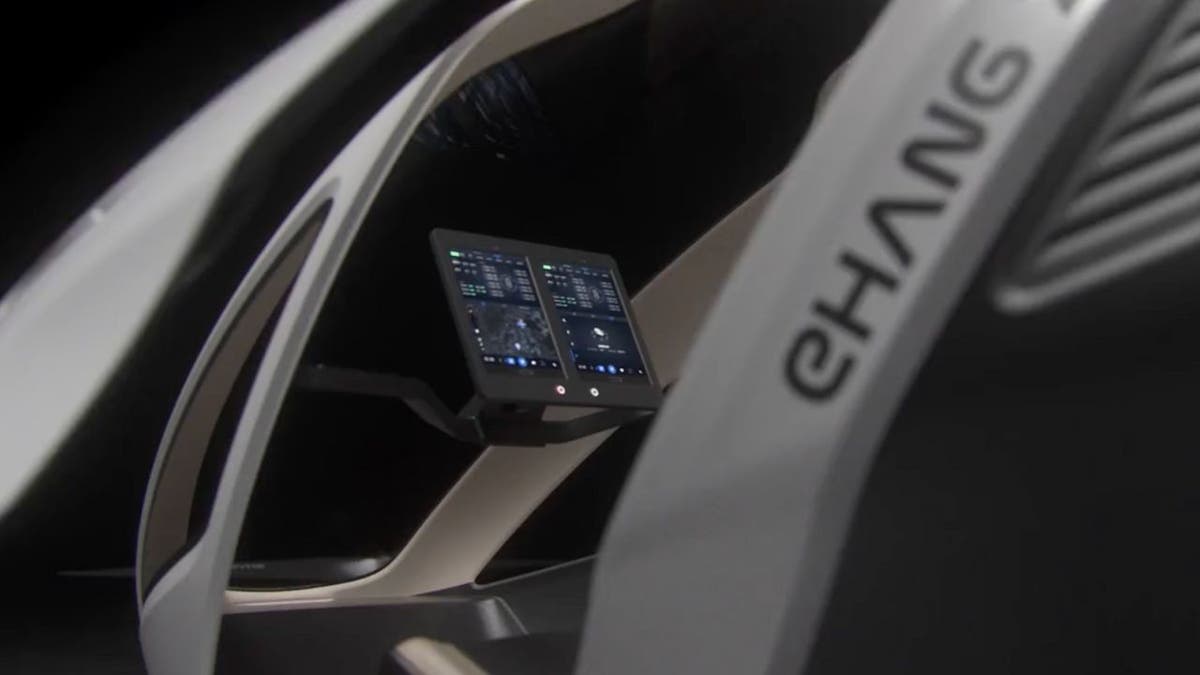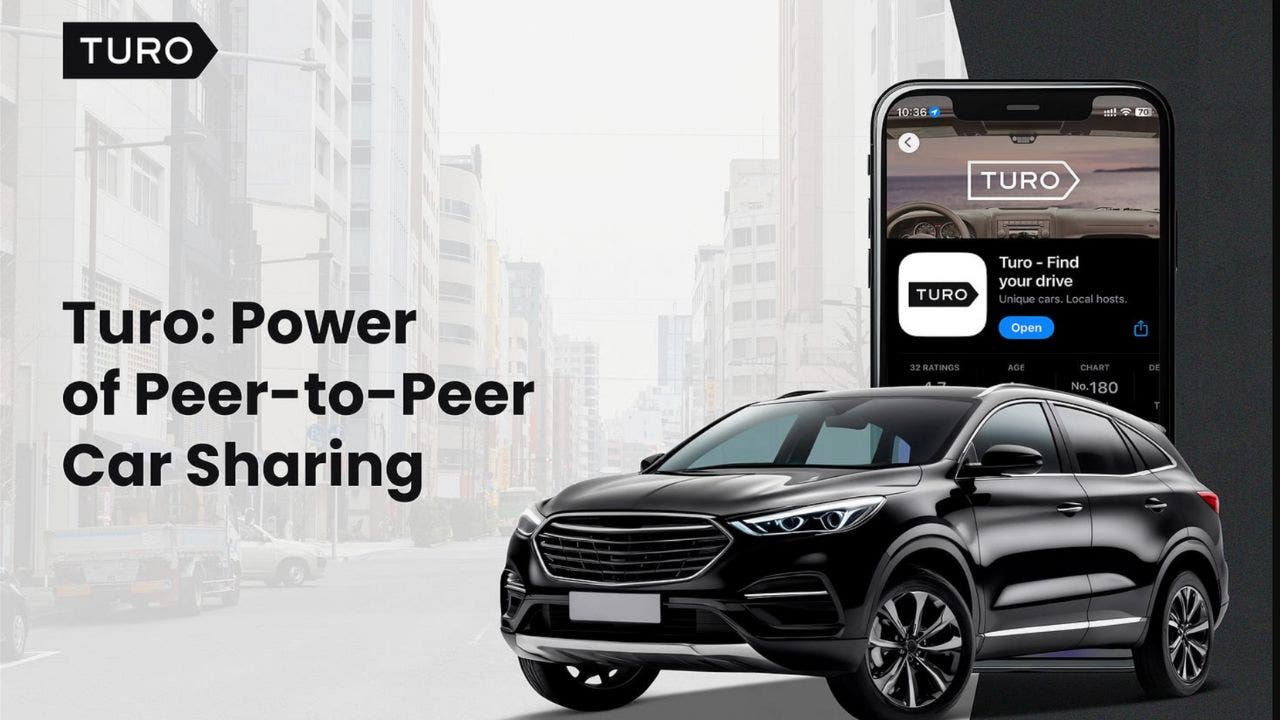Technology
The world’s first certified passenger-carrying air taxi takes flight

Imagine flying over the city in a pilotless, electric-powered aircraft that can take you from point A to point B in minutes without a pilot onboard. Sounds like science fiction, right? Well, not anymore.
China-based Ehang has become the world’s first company to receive airworthiness certification for its fully autonomous, passenger-carrying air taxis.
What are electric air taxis?
Ehang’s EH216-S air taxis are electric vertical take-off and landing (eVTOL) aircraft that can carry up to two passengers or 600 pounds of cargo. They are powered by 16 electric rotors and can fly at speeds of up to 80 mph and distances of up to 18 miles.
CLICK TO GET KURT’S FREE CYBERGUY NEWSLETTER WITH SECURITY ALERTS, QUICK VIDEO TIPS, TECH REVIEWS, AND EASY HOW-TO’S TO MAKE YOU SMARTER
How do electric air taxis operate without pilots?
The air taxis are controlled by a centralized command and control center that monitors the flight status, routes and weather conditions.
Passengers can simply select their destination on a touchscreen inside the cabin and enjoy the ride without worrying about piloting the aircraft.
The air taxis do not require traditional infrastructure such as airports or runways. They can take off and land vertically from any flat surface, such as a rooftop, parking lot, or park.
China-based Ehang has become the world’s first company to receive airworthiness certification for its fully autonomous, passenger-carrying air taxis. (Ehang)
ARE YOU PROTECTED FROM THREATS? SEE THE BEST ANTIVIRUS PROTECTION REVIEWED HERE
The air taxis use electric power to reduce environmental harm caused by emissions. They can be fully charged in two hours and have low noise levels.
The EH216-S vehicles have multiple redundancies in their systems, such as backup batteries, rotors, and communication links.
They also have emergency landing systems and parachutes in case of any malfunction.
How did these China-based electric air taxis get the approval to fly?
Since 2014, over 40,000 test flights have been conducted in various locations around the world. In January 2021, Ehang applied for a type certificate from the Civil Aviation Administration of China (CAAC), which is the official recognition of the airworthiness of an aircraft.

China-based Ehang has become the world’s first company to receive airworthiness certification for its fully autonomous, passenger-carrying air taxis. (Ehang)
MORE: REVOLUTIONARY DELIVERY DRONE COULD BE DROPPING A PACKAGE AT YOUR HOME
The CAAC evaluated Ehang’s air taxis for over 500 parameters, such as structural strength, software simulation, flight performance and electromagnetic compatibility. The process took more than 1,000 days and involved extensive laboratory, ground and flight tests.
On October 15, 2023, Ehang announced that it had received certification from the CAAC, making it the first company in the world to obtain such a certification for passenger-carrying eVTOL aircraft. This means that Ehang can now start commercial operations of its air taxis in China. As Ehang’s founder-chair and CEO Huazhi Hu said, “Embracing the certification as our springboard, we will launch commercial operations of the EH216-S air taxis, prioritizing safety above all.”

China-based Ehang has become the world’s first company to receive airworthiness certification for its fully autonomous, passenger-carrying air taxis. (Ehang)
MORE: MEET THE AUTONOMOUS MEGA-MOWER ROBOT PUTTING AN END TO GRASS CUTTING AS WE KNOW IT
What are the potential applications of electric air taxis?
Ehang’s air taxis have a wide range of potential applications for urban air mobility (UAM), which uses aerial vehicles to provide transportation services in urban areas.
They can help you avoid traffic jams and save time on your commute. They can also take you to places that are hard to reach by car or public transportation. Whether you need to go to a business meeting, a tourist attraction or a hospital, Ehang’s air taxis can get you there quickly and conveniently. Ehang’s air taxis can also offer you a new perspective of the city with views of the skyline, landmarks and nature, all from above.
Beyond just transporting people, these aircraft can be used for delivering goods, such as packages, medical supplies or food. They can also be used for emergency situations, such as natural disasters or accidents. In those situations where time is of the essence, these vehicles could transport much-needed medical personnel or equipment to the scene quickly and safely.

China-based Ehang has become the world’s first company to receive airworthiness certification for its fully autonomous, passenger-carrying air taxis. (Ehang)
MORE: ELECTRIC CARGO BIKE AIMS TO REPLACE YOUR SUV
What are the challenges for pilotless air taxis?
Ehang’s air taxis are a groundbreaking innovation that could revolutionize the future of transportation. However, they also face some challenges in terms of regulation, technology, market demand and social acceptance.

China-based Ehang has become the world’s first company to receive airworthiness certification for its fully autonomous, passenger-carrying air taxis. (Ehang)
Ehang’s air taxis need to comply with the laws and regulations of different countries and regions where they might operate. They also need to coordinate with other aircraft that use the same airspace. Ehang has been working closely with regulators to establish standards and policies for UAM.
One big hurdle is working to gain social acceptance and trust from the public. The manufacturer needs to educate and inform us about the benefits and risks of UAM. It also needs to address the potential issues and concerns of noise, privacy and environmental impact. For its part, Ehang has been conducting public demonstrations and campaigns to raise awareness and confidence in UAM.

China-based Ehang has become the world’s first company to receive airworthiness certification for its fully autonomous, passenger-carrying air taxis. (Ehang)
GET MORE OF MY SECURITY ALERTS, QUICK TIPS & EASY VIDEO TUTORIALS WITH THE FREE CYBERGUY NEWSLETTER – CLICK HERE
Kurt’s key takeaways
Ehang’s air taxis are a pioneering achievement that could transform how we travel in cities across this country. By receiving the first industry approval for fully autonomous, passenger-carrying air taxis, Ehang has opened up new possibilities and opportunities for UAM. But with all new technology comes challenges, and those are what Ehang needs to tackle to be successful moving forward.
How do you feel about the idea of traveling in an air taxi with no pilot? Do you think this is a recipe for trouble? Let us know by writing us at Cyberguy.com/Contact.

China-based Ehang has become the world’s first company to receive airworthiness certification for its fully autonomous, passenger-carrying air taxis. (Ehang)
For more of my tech tips and security alerts, subscribe to my free CyberGuy Report Newsletter by heading to Cyberguy.com/Newsletter.

China-based Ehang has become the world’s first company to receive airworthiness certification for its fully autonomous, passenger-carrying air taxis. (Ehang)
Answers to the most asked CyberGuy questions:
What is the best way to protect your Mac, Windows, iPhone and Android devices from getting hacked?
What is the best way to stay private, secure and anonymous while browsing the web?
How can I get rid of robocalls with apps and data removal services?
Copyright 2023 CyberGuy.com. All rights reserved.

Technology
Nvidia is bringing a native GeForce Now app to Steam Deck
/cdn.vox-cdn.com/uploads/chorus_asset/file/25070059/DSCF9169.jpg)
Nvidia plans to release a native GeForce Now app for Steam Deck “later this year,” according to a blog post. It’s already relatively straightforward to get Nvidia’s cloud gaming service set up on Steam Deck thanks to a special script from Nvidia, but a native app should be easier to install and will support up to 4K resolution and 60 fps with HDR when connected to a TV.
Nvidia also plans to bring GeForce Now to some major VR headsets later this month, including the Apple Vision Pro, Meta Quest 3 and 3S, and Pico “virtual- and mixed-reality devices.” When GeForce Now version 2.0.70 is available, people using those headsets will be able to access an “extensive library of games” they can stream by visiting play.geforcenow.com in their browser.
The company also says that two major titles from Microsoft will be available on GeForce Now when they come out this year: Avowed, which launches February 18th, and DOOM: The Dark Ages, which is set to be available sometime this year.
Technology
Turo rentals emerge as common thread in Las Vegas Cybertruck and New Orleans deadly incidents

In the early hours of Jan. 1, 2025, two horrific attacks shook the nation, raising serious questions about car-sharing platform security and potential terrorism links. In Las Vegas, a Tesla Cybertruck exploded outside the Trump International Hotel, killing the driver and injuring seven others.
Meanwhile, in New Orleans, a pickup truck, later identified as a Ford F-150, plowed into crowds on Bourbon Street, resulting in at least 15 fatalities and dozens of injuries.
Both vehicles were rented through Turo, a peer-to-peer car-sharing platform, sparking intense scrutiny of the company’s operations and security measures.
GET SECURITY ALERTS, EXPERT TIPS – SIGN UP FOR KURT’S NEWSLETTER – THE CYBERGUY REPORT HERE
Image from Turo website (Turo)
The Las Vegas incident
At approximately 8:40 a.m. PT on Jan. 1, 2025, a Tesla Cybertruck pulled up to the valet area of the Trump International Hotel in Las Vegas. Within 15 to 20 seconds, the vehicle exploded, killing the driver and injuring seven bystanders. Investigators discovered that the Cybertruck was packed with firework mortars and camp fuel canisters.
The FBI is investigating the incident as a potential act of terrorism. Tesla CEO Elon Musk claimed on social media that the explosion was caused by large fireworks or a bomb in the bed of the Cybertruck and was unrelated to the vehicle itself.
The New Orleans attack
In the early hours of New Year’s Day, a pickup truck, later identified as a Ford F-150, rammed through police barricades on Bourbon Street in New Orleans’ French Quarter. The driver, identified as 42-year-old Shamsud-Din Jabbar, an Army veteran from Texas, mowed down pedestrians over a three-block stretch while firing into the crowd.
The attack resulted in at least 15 deaths and dozens of injuries. Jabbar was killed in a subsequent shootout with police. The FBI is treating this incident as an act of terrorism, noting that an Islamic State flag was found on the vehicle and improvised explosive devices were discovered inside.
The Turo connection to both incidents
Both vehicles used in these incidents were rented through Turo, a peer-to-peer car-sharing platform. This connection has raised significant questions about the company’s security measures and screening processes.
What is Turo?
Turo is a peer-to-peer car-sharing platform that connects vehicle owners with people looking to rent cars. Often described as the “Airbnb for cars,” Turo allows individuals to list their personal vehicles for rent, providing an alternative to traditional car rental companies.
Founded in 2010 as RelayRides and rebranded to Turo in 2015, the company has grown into an international vehicle-sharing marketplace with more than 14 million users worldwide. Turo is available in more than 16,000 cities across the U.S., U.K., Canada, Australia and France.

Image from Turo website (Turo)
BEST CAR ACCESSORIES
How does Turo work?
The Turo process is straightforward:
- Listing: Car owners list their vehicles on the Turo platform, including details like make, model, price and availability.
- Booking: Renters search for available cars in their desired location and dates, then book directly through the Turo website or app.
- Verification: Both car owners and renters must verify their identities through the platform.
- Pick-up: Renters meet the car owner to pick up the vehicle or arrange for contactless check-in.
- Return: At the end of the rental period, the renter returns the car to the owner.
Turo handles payments and insurance options and provides customer support throughout the process.
WHAT IS ARTIFICIAL INTELLIGENCE (AI)?

Image from Turo website (Turo)
HOW YOUR CAR MIGHT BE SELLING YOU OUT TO INSURERS
Turo’s security measures and response
In light of the recent incidents, Turo’s security measures have come under intense scrutiny. The company’s current screening process includes:
- Identity verification
- Background checks (though the specific extent of these checks is not clear)
Turo requires users to upload a valid driver’s license to the app to be cleared for use. In some instances, Turo may collect additional identity verification information such as photographs or scanned copies of driver’s licenses, passports or other forms of identification.
The company has stated that they were “devastated” by the recent events and that their trust and safety team is actively cooperating with law enforcement. Importantly, Turo said in a statement to CyberGuy, “We do not believe that either renter had a criminal background that would have identified them as a security threat, and we are not currently aware of any information that indicates the two incidents are related.”

HOW TO PREVENT YOUR CAR FROM GETTING STOLEN
Regulatory landscape for peer-to-peer car-sharing platforms
The regulatory landscape for peer-to-peer car-sharing platforms like Turo is in a state of flux, with at least 13 states having enacted laws specifically governing this industry, distinct from regulations applied to traditional car rental companies.
Turo has been proactive in advocating for additional regulations in various states to establish clearer operational guidelines. A significant development occurred in 2022 when New York Gov. Kathy Hochul signed SB 6715 into law, providing a comprehensive regulatory framework for peer-to-peer car-sharing operations in the state. This legislation aims to expand transportation options and create economic opportunities for New Yorkers while addressing safety and insurance concerns.
Kurt’s key takeaways
These tragic events have highlighted potential vulnerabilities in the peer-to-peer car-sharing model. As investigations into these incidents continue, it’s likely that there will be increased scrutiny of Turo’s operations and security measures. The car-sharing industry may face calls for stricter regulations and enhanced screening processes. Turo and similar platforms might need to reevaluate and strengthen their security protocols to prevent such incidents in the future.
What are your thoughts on the safety and regulatory measures of peer-to-peer car-sharing platforms like Turo, and should there be stricter screening processes for renters and vehicles to prevent potential misuse or criminal activities? Let us know by writing us at Cyberguy.com/Contact.
For more of my tech tips and security alerts, subscribe to my free CyberGuy Report Newsletter by heading to Cyberguy.com/Newsletter.
Ask Kurt a question or let us know what stories you’d like us to cover.
Follow Kurt on his social channels:
Answers to the most asked CyberGuy questions:
New from Kurt:
Copyright 2025 CyberGuy.com. All rights reserved.
Technology
NBC’s Grimm series is being reborn as a Peacock movie
/cdn.vox-cdn.com/uploads/chorus_asset/file/25820156/.jpg)
Between Nosferatu and Wolf Man, it feels like Hollywood has come back around on good, old fashioned monster movies. And it seems like Peacock wants in on the action with a feature-length reboot of the long-dead Grimm series.
Variety reports that Peacock is moving forward with a new film based on Grimm, Stephen Carpenter, Jim Kouf, and David Greenwalt’s 2011 series about a Portland cop who discovers that he’s one of the chosen few meant to defend humanity from monsters. Josh Berman (Drop Dead Diva) is attached to write the movie as well as co-executive produce with Kouf and Greenwalt.
In its original run, Grimm ran for six seasons that saw Detective Nick Burkhardt (David Giuntoli) become a formidable Grimm (the show’s lingo for monster hunters) alongside his human partner Hank Griffin (Russell Hornsby) and werewolf ally Munroe (Silas Weir Mitchell). Peacock has yet to announce details about the movie’s plot or whether any members of Grimm’s original cast members might return. But given that this isn’t the first time NBC has flirted with the idea of resurrecting the IP, it feels pretty safe to say this time around, Grimm’s definitely coming back to the small screen.
-

 Health1 week ago
Health1 week agoNew Year life lessons from country star: 'Never forget where you came from'
-
/cdn.vox-cdn.com/uploads/chorus_asset/file/24982514/Quest_3_dock.jpg)
/cdn.vox-cdn.com/uploads/chorus_asset/file/24982514/Quest_3_dock.jpg) Technology1 week ago
Technology1 week agoMeta’s ‘software update issue’ has been breaking Quest headsets for weeks
-

 Business6 days ago
Business6 days agoThese are the top 7 issues facing the struggling restaurant industry in 2025
-

 Culture6 days ago
Culture6 days agoThe 25 worst losses in college football history, including Baylor’s 2024 entry at Colorado
-

 Sports6 days ago
Sports6 days agoThe top out-of-contract players available as free transfers: Kimmich, De Bruyne, Van Dijk…
-

 Politics5 days ago
Politics5 days agoNew Orleans attacker had 'remote detonator' for explosives in French Quarter, Biden says
-

 Politics4 days ago
Politics4 days agoCarter's judicial picks reshaped the federal bench across the country
-

 Politics3 days ago
Politics3 days agoWho Are the Recipients of the Presidential Medal of Freedom?















